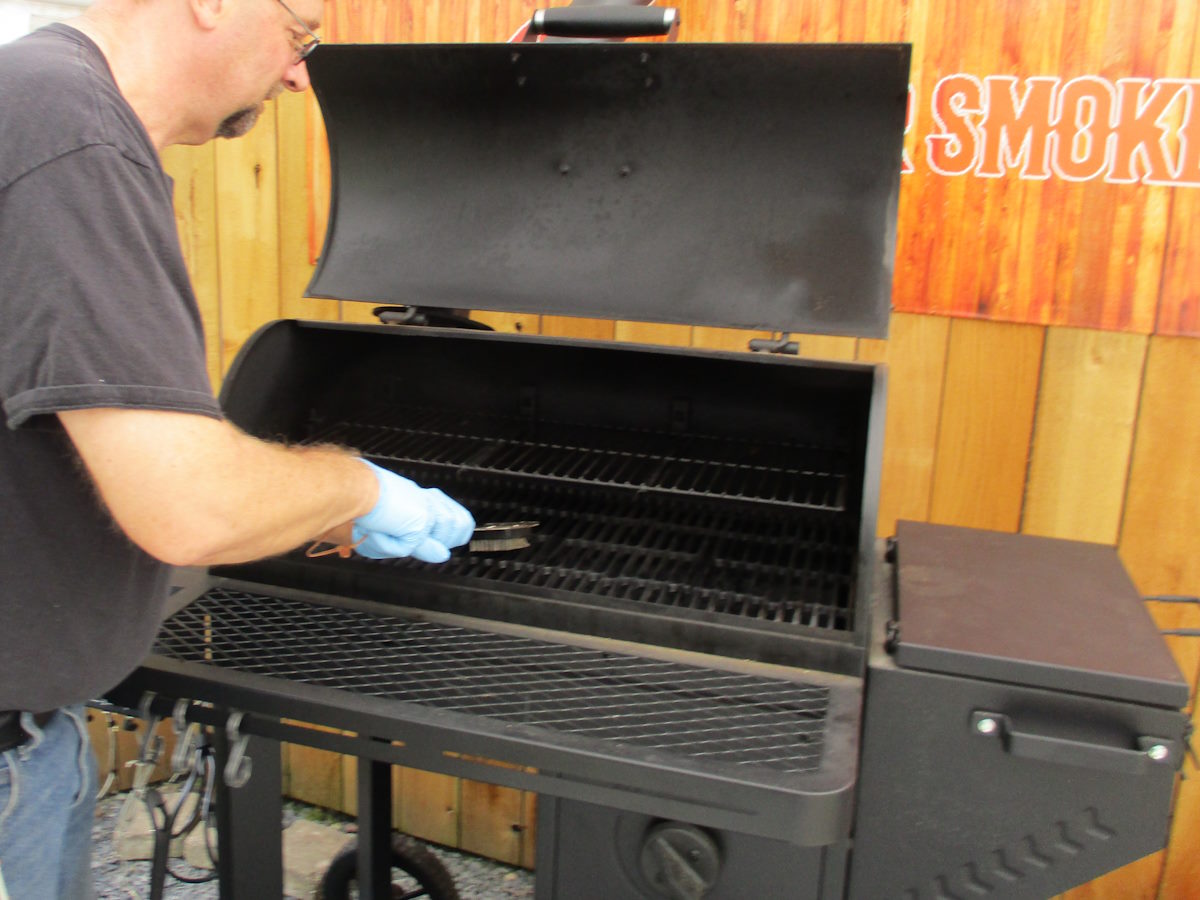
Seasoning your Oklahoma Joe’s Tahoma 900 is a crucial step to ensure it performs optimally and provides the best flavors for your barbecue. Seasoning not only helps to protect the smoker from rust but also creates a non-stick surface and imparts a distinct smoky flavor to your food. Here’s a detailed guide on how to season your Oklahoma Joe’s Tahoma 900 effectively.
Why Season Your Smoker?
Before diving into the steps, it’s important to understand why seasoning is necessary. When you first purchase a smoker, it comes with manufacturing oils and residues that need to be burnt off. Seasoning helps to:
- Remove any residues from the manufacturing process.
- Create a protective layer that prevents rust.
- Enhance the flavor of your smoked foods by building up a layer of seasoning over time.
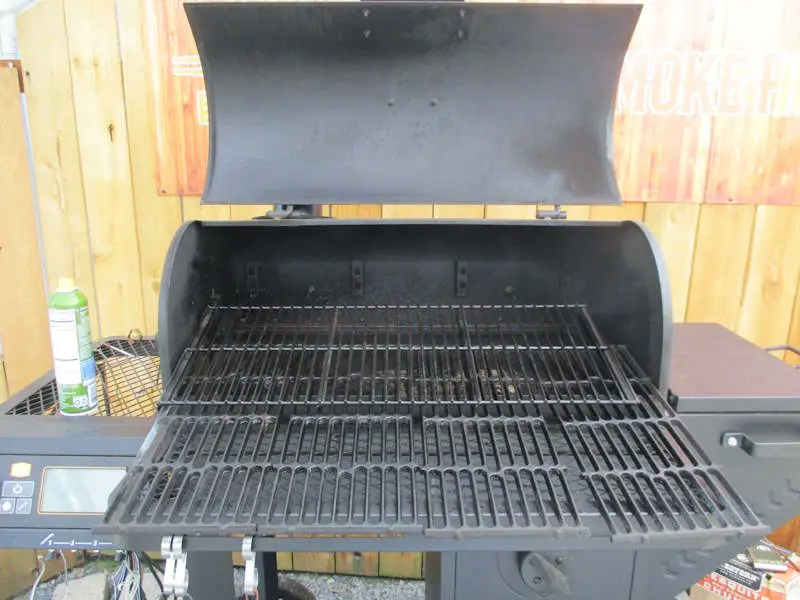
Step-by-Step Guide to Seasoning Your Oklahoma Joe’s Tahoma 900
1. Gather Your Supplies
To get started, you’ll need the following items:
- High-heat cooking oil (vegetable oil, canola oil, or flaxseed oil)
- Spray oil
- Clean cloth or paper towels
- Aluminum foil
- Fire starters (like tumbleweed or wax starters)
- Charcoal or wood chunks
- A grill brush
2. Clean the Smoker
Even though your smoker is brand new, it’s essential to thoroughly clean it to remove any dust or debris that may have accumulated during shipping. Use a mild detergent and warm water to wipe down the interior and exterior surfaces. Rinse thoroughly and let it dry completely.
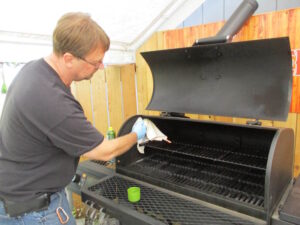
3. Apply a Thin Coat of Oil
Using a clean cloth or paper towel, apply a thin coat of high-heat cooking oil to the interior surfaces of the smoker. While using spray oil is a convenient option, wiping the oil on with a cloth tends to provide better coverage. Avoid open flames when using spray oil.
4. Preheat the Smoker
Once the oil is applied, it’s time to preheat the smoker. Fill the charcoal bin with your choice of charcoal or wood chunks and light the fire starters. Set the smoker to a high temperature, around 275-300°F. This high heat will help to burn off any remaining residues and begin the seasoning process.
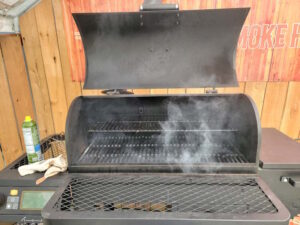
5. Maintain the Temperature
Allow the smoker to maintain this high temperature for about 2-3 hours. This duration is crucial for burning off any manufacturing oils and for the oil to polymerize, creating a protective layer on the metal surfaces. During this time, monitor the temperature to ensure it remains consistent.
6. Cool Down and Reapply Oil
After the initial burn-off period, allow the smoker to cool down completely. Once cool, use the grill brush to remove any remaining debris. Then apply another thin coat of oil to all the interior surfaces, just like in step 3. Again, using spray oil is convenient, but wiping it on with a cloth ensures better coverage. This second application helps to reinforce the protective layer and enhances the seasoning process.
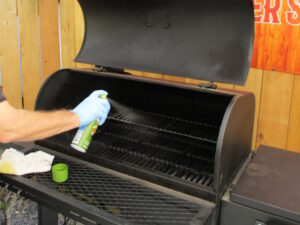
7. Perform a Second Burn
Light the smoker again and bring it to a high temperature, around 275-300°F, for another 1-2 hours. This second burn helps to solidify the seasoning layer and ensures the smoker is ready for cooking.
8. Inspect and Touch Up
After the second burn, inspect the interior surfaces. If there are any areas that look dry or unevenly seasoned, use the grill brush to clean those spots, apply another thin coat of oil, and perform another burn for 1-2 hours. This step ensures a uniform protective layer across all surfaces.
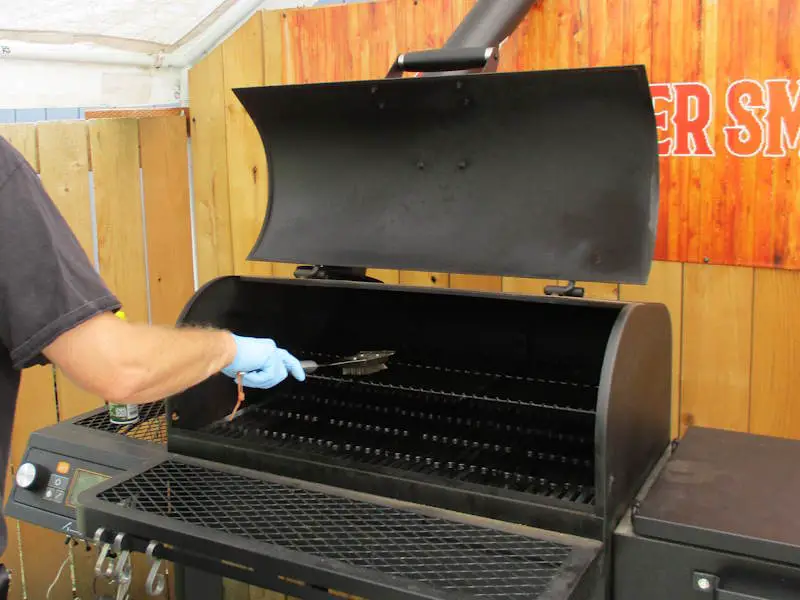
Tips for Maintaining Seasoning
- Regular Oil Application: After each use, while the smoker is still warm (not hot), apply a thin coat of oil to the grates and interior surfaces. This practice helps to maintain the seasoning layer and prevents rust. Using spray oil is a quick method, but wiping it on ensures better coverage.
- Avoid Harsh Chemicals: When cleaning your smoker, avoid using harsh chemicals or abrasive materials that can strip away the seasoning. Use mild soap and warm water instead.
- Monitor for Rust: Regularly check for any signs of rust. If you spot rust, scrub it off with the grill brush and reapply oil to the affected area before the next use.
Note: If you have concerns about using wire brushes on your smoker, you can use aluminum foil as an alternative. Take a square piece of foil and crumple it to create as many wrinkles as possible. Then, unroll the foil and form it into a ball. Hold the ball with a pair of tongs and use it in place of a brush.
Additional Considerations
Choosing the Right Oil
The type of oil you use can affect the seasoning process. Oils with high smoke points, such as canola, vegetable, or flaxseed oil, are ideal because they can withstand the high temperatures needed for seasoning without breaking down.
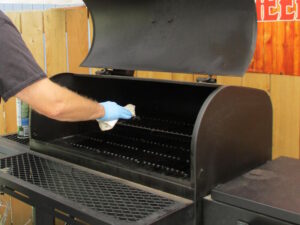
Frequency of Seasoning
How often you need to season your smoker depends on how frequently you use it and the environmental conditions to which it is exposed. Generally, re-seasoning every few months or after a particularly long cook is a good practice. If you notice food sticking to the grates or any rust formation, it’s a sign that your smoker needs re-seasoning.
Enhancing Flavor
As you continue to use and season your smoker, it will develop a rich, smoky patina that enhances the flavor of your food. Each cooking session adds layers of seasoning, contributing to a more robust flavor profile over time.
Storage and Protection
When not in use, store your Oklahoma Joe’s Tahoma 900 in a covered area or use a weather-resistant cover to protect it from the elements. Exposure to rain, snow, and direct sunlight can deteriorate the seasoning layer and promote rust formation.
Conclusion
Properly seasoning your Oklahoma Joe’s Tahoma 900 is an essential step in ensuring its longevity and performance. By following these steps, you can create a protective layer that enhances the flavor of your smoked foods and keeps your smoker in top condition. Regular maintenance and re-seasoning will keep your smoker performing at its best, allowing you to enjoy delicious, smoky barbecue for years to come.
Remember, the key to great barbecue lies not just in the quality of your ingredients but also in the care and maintenance of your equipment. Happy smoking!
